Open Source Research — the Power of Us
Thomas B. Kepler A , Marc A. Marti-Renom B , Stephen M. Maurer C , Arti K. Rai D , Ginger Taylor E and Matthew H. Todd F GA Department of Biostatistics and Bioinformatics, Duke University, Durham NC 27708-0090, USA.
B Departments of Biopharmaceutical Sciences and Pharmaceutical Chemistry, and California Institute for Quantitative Biomedical Research, University of California, San Francisco CA 94143-2240, USA.
C Goldman School of Public Policy, University of California, Berkeley CA 94720-7320, USA.
D School of Law, Duke University, Durham NC 27708-0360, USA.
E The Synaptic Leap. www.thesynapticleap.org
F School of Chemistry, University of Sydney, Sydney NSW 2006, Australia.
G Corresponding author. Email: m.todd@chem.usyd.edu.au
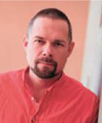
Thomas Kepler received his Ph.D. in physics from Brandeis University in 1989, and did postdoctoral work in neurobiology and immunology. He develops and applies theory and computational tools to study the evolution of the immune system, spatial organization in the immune system, and the design of vaccine adjuvants. |
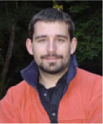
Marc A. Marti-Renom received his Ph.D. in biophysics from the Autonomous University of Barcelona in 1999. He was awarded a Burroughs Wellcome Fund postdoctoral fellowship, which he spent at the Laboratory of Molecular Biophysics at the Rockefeller University. In 2003 he was appointed as adjunct assistant professor at the University of California, San Francisco, and from 2006 he will be head of the Structural Genomics Unit at the Price Felipe Research Center in Valencia, Spain. His interests focus on comparative protein structure prediction. |
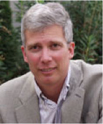
Stephen Maurer was educated at Yale University and Harvard Law School. He is adjunct professor in the Goldman School of Public Policy at the University of California at Berkeley. His research interests include open source, intellectual property rights mechanisms, and science policy. |

Arti Rai is a Professor at Duke Law School. She has also taught at Yale Law School and the University of Pennsylvania Law School. Her research focusses on intellectual property and new technologies. She currently has a five-year US National Institute of Health grant to study novel open and collaborative approaches to biomedical research. |
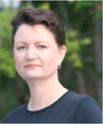
Ginger Taylor is the founder and Executive Director of The Synaptic Leap, a non-profit organization. Ginger has over 18 years experience in the software industry. Her recent specialty was enterprise portal applications. She was responsible for launching the PeopleSoft Enterprise Portal and during start-up mode managed product development, product management, quality assurance, and product marketing teams. By starting The Synaptic Leap, Ginger is now using her experience with portals to empower online collaboration amongst biomedical scientists. |
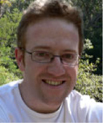
Matthew Todd received his Ph.D. in chemistry from the University of Cambridge in 1999. He was a postdoctoral fellow at the University of California, Berkeley, Fellow in Chemistry at New Hall College, Cambridge University, and then Lecturer at Queen Mary, University of London, before taking up his present position in Sydney in 2005. His interests are asymmetric catalysis, synthesis, and chemical biology. |
Australian Journal of Chemistry 59(5) 291-294 https://doi.org/10.1071/CH06095
Submitted: 26 March 2006 Accepted: 29 May 2006 Published: 13 June 2006
Abstract
Academic and industrial scientific research operate on powerful and complementary models, consisting of some mix of competitive funding, peer review, and limited inter-laboratory collaboration. Enormous successes have arisen from both models. Yet there are clear failures to deliver results in certain areas, such as the provision of drugs for some of the most prevalent of human diseases. Is there a mechanism of research that is not wholly dependent on funding for its operation nor on traditional peer-reviewed articles for its propagation? Open source methods have delivered tangible benefits in the computer science community. We describe here efforts to extend these principles to science generally, and in particular biomedical research. Open source research holds great promise for solving complex problems in areas where profit-driven research is seen to have failed. We illustrate this with a specific problem in organic chemistry that we think will be solved substantially faster with an open source approach.
[1]
[2]
D. Harhoff,
J. Henkel,
E. von Hippel,
Res. Policy 2003, 32, 1753.
| Crossref | GoogleScholarGoogle Scholar |
| Crossref | GoogleScholarGoogle Scholar |
| Crossref | GoogleScholarGoogle Scholar |

[8]
* Descriptions of open source successes may be found on the open source encyclopedia Wikipedia at en.wikipedia.org/wiki/Open_source


